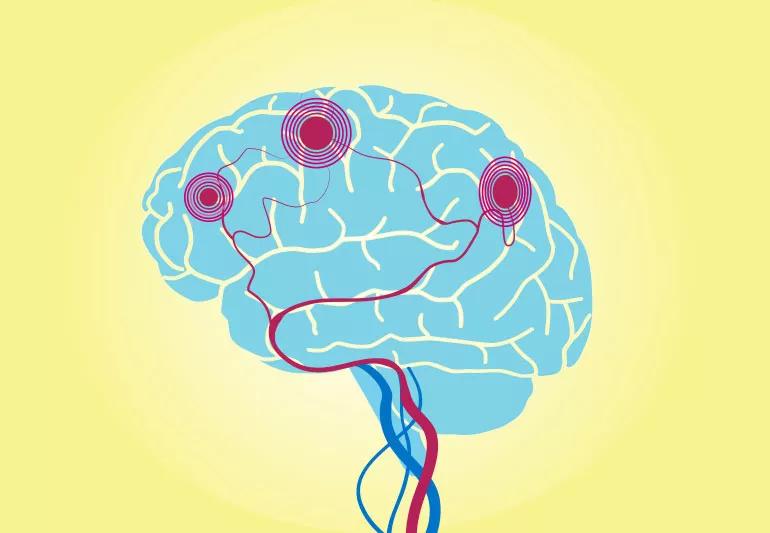Signs point to changes in the brain

Aches and pains — everywhere. Fatigue. Sleep problems. Foggy thinking. Together, these symptoms often add up to fibromyalgia.
Advertisement
Cleveland Clinic is a non-profit academic medical center. Advertising on our site helps support our mission. We do not endorse non-Cleveland Clinic products or services. Policy
Experts still have a lot to learn about the cause of the disease. But scientists are finding evidence that points to a likely suspect: neuroinflammation, or inflammation in the brain.
“We still don’t fully understand what causes fibromyalgia. But brain scans of patients with fibromyalgia show this neuroinflammation,” says pain management expert Benjamin Abraham, MD. “We can see that the pain nerves are inflamed and irritated.”
Muscle pain is one of the key symptoms of fibromyalgia. So in the early days of fibromyalgia research, scientists looked for evidence of inflammation in the aching muscles of people with the disease, says Dr. Abraham. But they came up short.
Current research suggests they were looking in the wrong place. More and more, research hints that the problem lies in the pain processing systems within the brain.
People with a fibromyalgia diagnosis seem to have a pain-sensing system that’s out of whack. They have a bigger-than-normal reaction to painful sensations. And they often feel pain in response to sensations (like heat or cold) that other people don’t find painful at all.
“We’re beginning to understand that fibromyalgia is a disease of pain processing,” Dr. Abraham says.
Scientists have used PET scans to study the brains of people with a fibromyalgia diagnosis. They found widespread neuroinflammation across their brains. Other researchers tested the spinal fluid of people with fibromyalgia and discovered proteins linked to neuroinflammation.
Advertisement
Irritated brain cells aren’t the only culprit, though. “It’s more complicated than just neuroinflammation alone,” says Dr. Abraham. “There also seems to be a change in the size and shape of certain areas of the brain.” Scientists have found that some brain regions are smaller than expected.
There’s also evidence of differences in the brain’s connections, he explains. Typically, brain areas involved in pain processing are in constant communication. In people with fibromyalgia, there might be awkward pauses in that conversation. “If one area has trouble communicating with another, you might process sensations like cold, pressure or exercise as something painful,” he says.
Fibromyalgia is a complicated disease, and there probably isn’t a single cause, Dr. Abraham says. Still, most fibromyalgia experts agree that neuroinflammation and related brain changes are important factors in the illness.
Unfortunately, people with fibromyalgia are still sometimes told it’s all in their heads. The inflammatory evidence shows that’s half true — the answer might lie in patients’ brains, but not in their imagination.
New research findings might also point toward new treatments: Some people with fibromyalgia have seen their symptoms improve after taking medications that target neuroinflammation, Dr. Abraham says.
He’s optimistic that the research will lead to even better therapies. “The progress of science marches steadily,” he says. “There’s great hope for this condition.”
Advertisement
Learn more about our editorial process.
Advertisement

Pain is the distinguishing factor for determining if you have fibromyalgia

This analogy can help you explain the daily struggle of chronic pain

Setting the record straight: Diagnosis, treatment + more

Arthritis, migraines and endometriosis are common causes of chronic pain

Most recommended precautions center around minimizing bruising or swelling

Even one drink can have an impact on your cognitive function leading to slurred speech, blurred vision and impaired memory

Type 2 diabetes isn’t inevitable with these dietary changes

Applying a hot or cold compress can help with pain